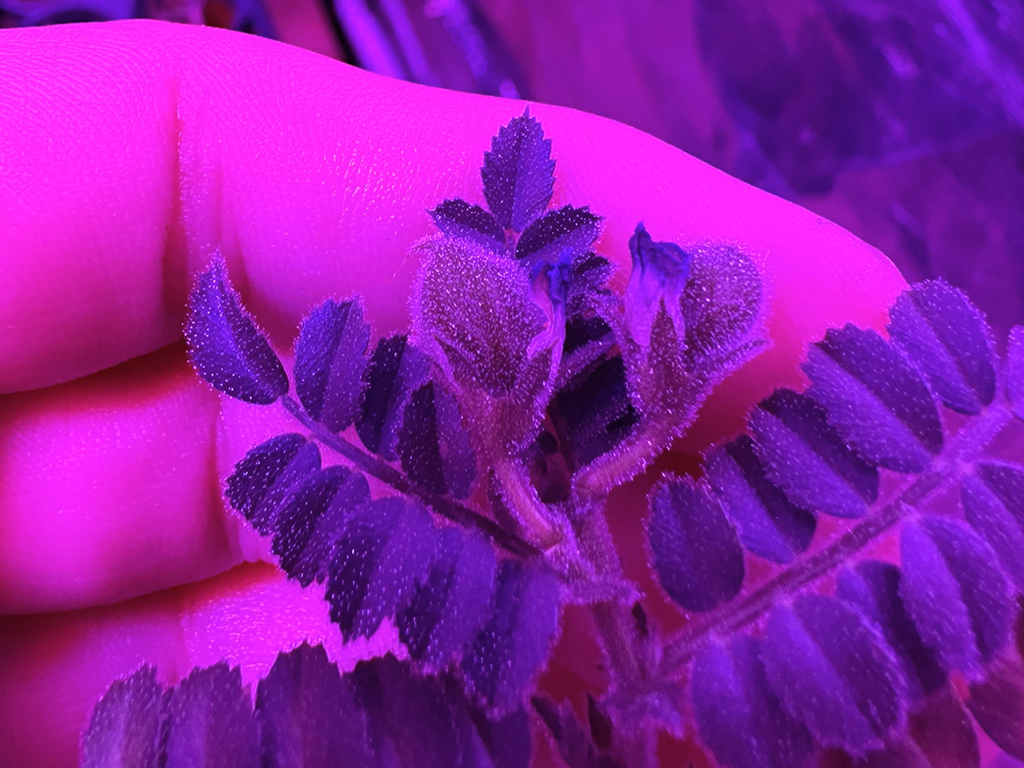Crop scientists are first to grow chickpeas in simulated ‘moondust’

Jessica Atkin/Texas A&M AgriLife
A love for space exploration led Jessica Atkin, a Texas A&M College of Agriculture and Life Sciences graduate student in the Department of Soil and Crop Sciences, to produce the first-ever moondust-grown chickpeas.
Using simulated moondust, Atkin and her colleagues grew chickpeas to seed in mixtures of up to 75% moondust — a groundbreaking endeavor. As a result of her study, future moon-bound astronauts may have the opportunity to substitute a portion of their prepackaged foods with protein derived from crops grown on the lunar surface.
“The Moon doesn’t have soil like Earth does,” Atkin said. “On Earth, the soil has organic material filled with nutrients and microorganisms, which support plant growth. Those are missing on the moon. This adds to other challenges, such as reduced gravity, radiation and toxic elements.”
To help address some of those challenges, Atkin has been developing a soil amendment to improve the structure and nutrient composition of lunar dust, making it suitable for growing crops.
Using soil regeneration mechanisms from Earth, Atkin leveraged the interaction between beneficial soil fungi and vermicompost, or worm manure, to create fertile moondust. These amendments improve plant tolerance to stressors and toxins.
Atkin said she will continue studying the multigenerational effects and believes that once the soil matrix is transformed, it could lead to the ability to grow other crops.

